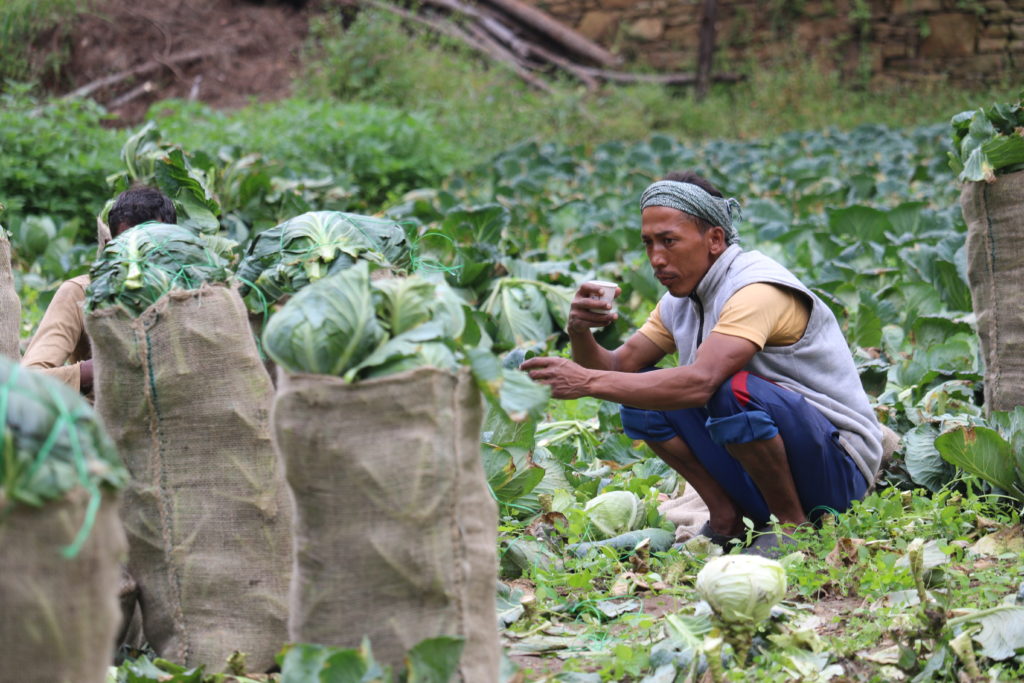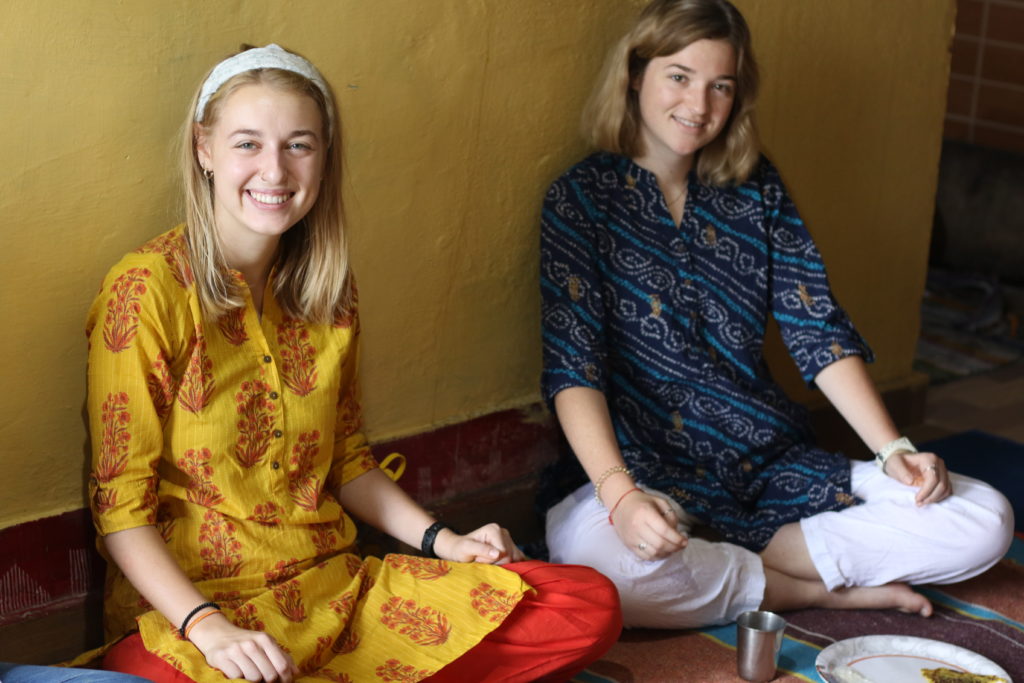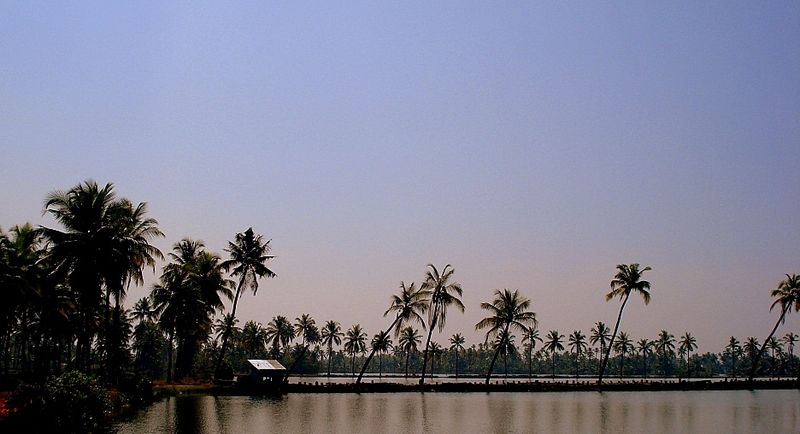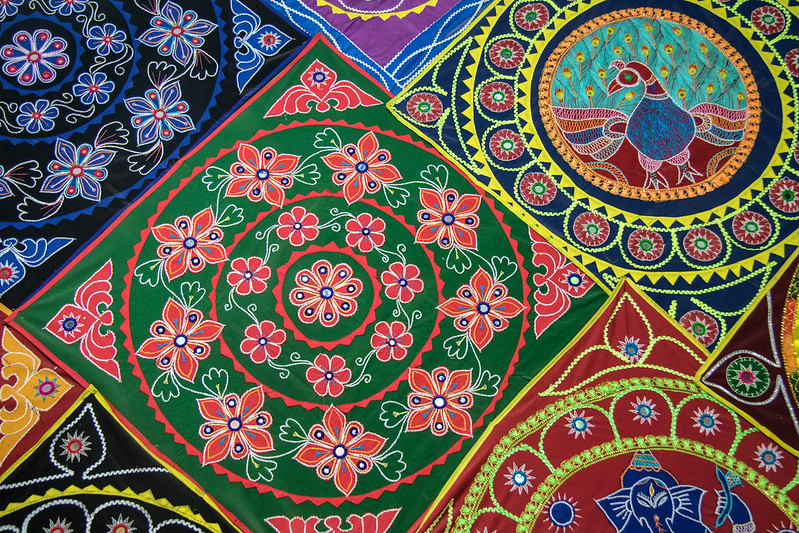Rural tourism destinations in India
Almost two-thirds of India lives in villages and hence to discover the real India, head to the countryside, a trend that is rapidly catching up with other forms of tourism. Here are some of the rural destinations that made it to the list of Indian travellers.
Through the windows of my wooden cottage, I can see nothing but vast stretches of snow-clad Himalayas. Occasional sounds of kids playing with the butterflies in the nearby garden, break the silence. As the cool breeze brushes my hair, the trance of Lachung, a small village in North Sikkim captures me. Located about 115 km from the capital Gangtok, Lachung is at a relatively high altitude of 2700 mn close to the border with Tibet and has attracted tourists not just from around the country, but also increasingly from around the world, lured by unique treks and monasteries in the area.
Similar to Lachung, there are several rural destinations within India which have become popular over the years, not only amongst the domestic tourists, but international as well. Besides the scenic beauty, the simplicity of life here, cultural lineage and unique agricultural practices have been some of the major attractants for the tourists. Many researchers and academicians, too visit the place for studying various aspects of rural life and the ecosystem here. This rise in rural tourism has not only helped in bringing the destination on tourist map, but have also helped in boosting the local economy and bringing to the locals, latest technological advances. Here are some of the most popular rural destinations in India.
Peora, Uttarakhand
A quaint village in Nainital district, Peora is where the time goes slow. Picking up on the trend of homestays, many in Peora have opened their homes to tourists, offering warmth and hospitality of a family. “We ensure that all the tourists are comfortable. During the stay, many tourists become our friends; we celebrate festivals together, dance and cook together. We truly believe in Atithi Devo Bhava (A guest is our god),” says Maya Bisht, the Sarpanch (head) of the village, who has also converted her place into a homestay. While here, one can pick vegetables grown on the lush green slopes to feed the locals. With the help of a local NGO, the women of Peora have also started manufacturing organic and herbal items of daily life, besides the embroidered artefacts, which fascinate several visitors. Tourists can also visit a local school, run by an NGO. Students here not only smile readily for the pictures but also narrate local folk tales in their ‘tyre park’. The day in Peora concludes with the view of only one hill glittering with city lights, surrounded by the adjoining hills painted in jet black.
Kumbalangi, Kerala
Kumbalangi is a small fishing hamlet in the backwaters of Kerala. Marked by mysterious mangroves, Kumbalangi has earned itself the reputation for being an ultimate eco-tourism destination over the years. The village is surrounded by turquoise waters and any sign of pollution is far away. It is quite a sight to watch fishermen scoop fish using their Chinese nets here. One can also try bait fishing here. Another popular activity is the making of ropes from coconut husk. With Kerala being the largest producer of coconuts in India, the authenticity of the process can be felt. Some other local activities popular amongst the tourists are basket making, coconut husking and pottery. Also known for its richness of spices, the local cuisines add altogether a new flavour to the visit. Nearby is a village of arts, Kalagram where fishing equipment and wooden handicrafts of fine quality can be spotted. While it is difficult to find lavish hotels here, living with the locals adds on to the experience.
Qila Raipur, Punjab
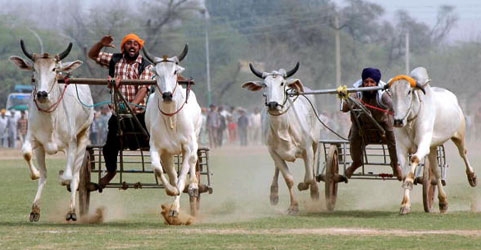
The annual rural sports event in Qila Raipur attracts many tourists| Picture Credit: Indianholiday.com
A small village in Punjab’s Ludhiana city, Qila Raipur is famous amongst the tourists for the unique annual sports event it hosts. Also called by the name ‘Rural Olympics,’ Qila Raipur Sports Event incorporates competitions for many traditional games from Punjab including kabbadi, bullock cart race, mule cart race, weight lifting, tug of war and shooting clay pigeon. Special competitions are organised for the differently abled sports enthusiasts as well. Started on a much smaller scale in 1933, the three-day long event now observes participation of over 5000 sportsmen and sportswomen, and attracts nearly a million spectators. The event is usually organised in the first weekend of February. One can also get a generous dose of the culture of Punjabi villages. Locals here are quite friendly and can guide you through the long stretches of mustard fields, the gurudwaras (place of worship for the Sikhs) and several local attractions here. The delicious makke ki roti and sarso ka saag (mustard curry served with corn breads) served with the cold lassi (a traditional beverage made from curd) cannot be missed!
Pipili Village, Odisha
Pipili village of Odisha, an eastern Indian state, is a perfect cocktail of rural as well as art and culture tourism. The small hamlet is famous for appliqué, the centuries old technique of superposing colourful patches of fabric on foundation fabric, found only in Odisha. The practice is followed by a specific caste of professional tailors, known as darjis. Though appliqué fabrics are usually used for decorative items of deities in religious processions, the technique has made its way to objects of daily life as well.
Tourists can visit the small units where the practise is followed as well as individual artists. It is impossible to walk past the roads of Pipili without catching hold of these colourful fabrics, designed intricately by the darjis. The destination is mostly visited during the Lord Jagannath Rathyatra (procession) celebrated in the second day of Shukla Paksha of the Hindu lunar month of Ashadha (usually in the month of July). While here, the tourists can visit local beaches and the top nearby attractions including Jagannath Temple, Chilika Lake, the UNESCO World Heritage site-Konark Temple and Puri Beach. The local cuisine, which mainly involves unique recipes of bamboo, rice and seafood are also preferred by the tourists.

